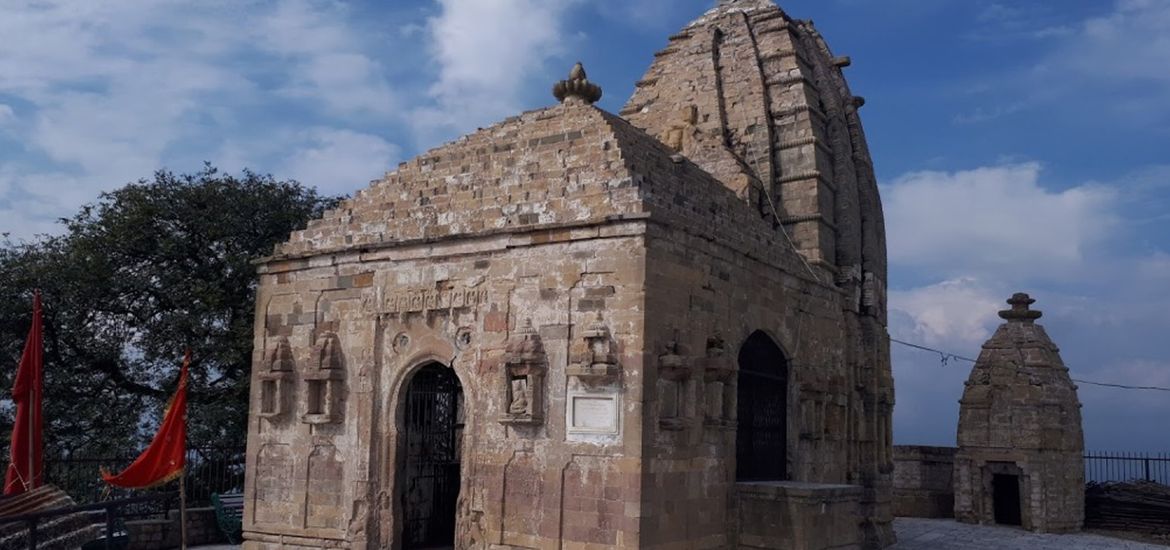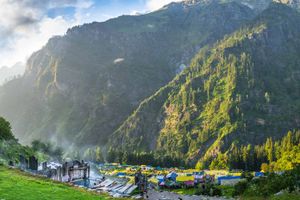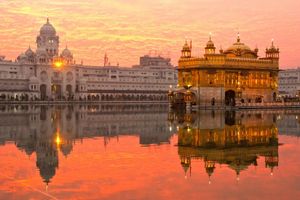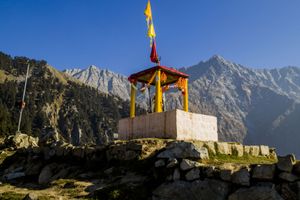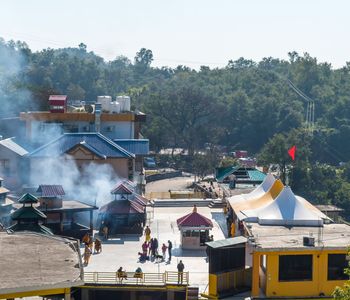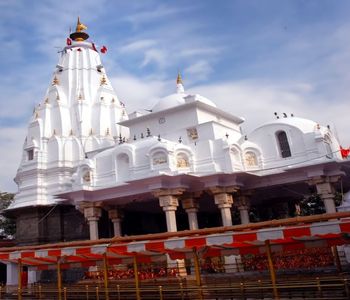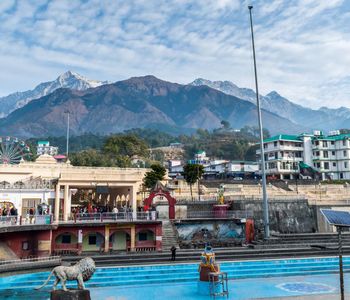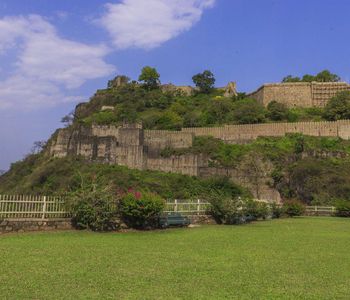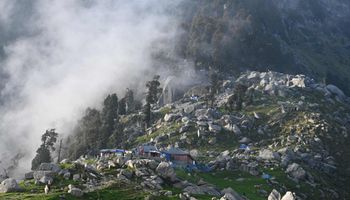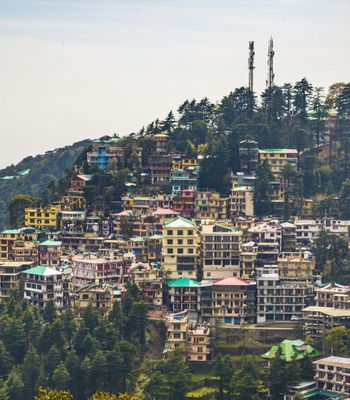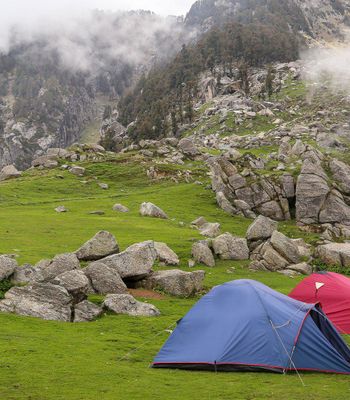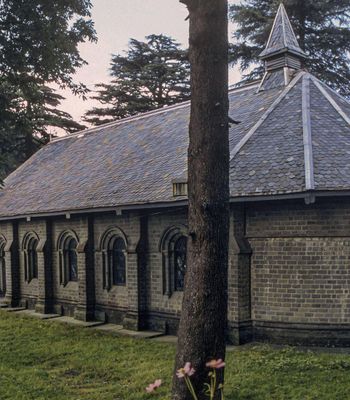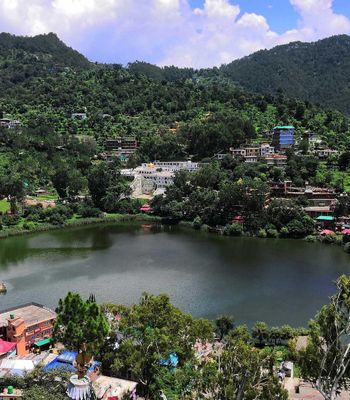Have you ever come across a location that seemed to be sharing tales of ages past? Nestled in the serene Himachal Pradesh highlands, Ashapuri Mata Temple is a long-forgotten gem that echoes with ageless chants and is surrounded by breathtaking scenery.
Even though the temple is half demolished, pilgrims and visitors seeking peace and harmony are nevertheless drawn to it by its beautiful surroundings and devotion to Maa Ashapuri, the goddess who is claimed to grant wishes.
Echoes Through Time: The Legendary Origins of Ashapuri Mata
The Ashapuri Mata Temple has roots stretching back nearly 1,200 years. According to historians, it was constructed when the Katoch dynasty, one of India's longest surviving royal lineages, was in power. The temple served as a major spiritual centre for the local population and was said to be frequently visited by royal families and sages.
Legend has it that during their exile, the Pandavas roamed through this area and offered prayers to Ashapuri Mata. Over the centuries, the temple suffered significant damage, likely due to a devastating earthquake.
While parts of the structure remain broken, the idol of the goddess continues to receive offerings, prayers, and faith from generations of locals. To this day, the temple functions as an active place of worship.
Stone, Spirit, and Silence: The Architecture That Endures
Though much of the temple has been weathered by time, the architectural details still tell a fascinating story of ancient craftsmanship. The temple, which was constructed using enormous interlocking stones, is an example of the Nagara architectural style that is popular in North India.
Important architectural features consist of:
- Panels of carved stone: Intricate carvings of gods, floral motifs, and geometric designs adorn the remaining walls and slabs.
- Sanctum Sanctorum (Garbhagriha): At the centre of the temple lies the inner sanctum, which houses the idol of Maa Ashapuri. The space is dimly lit, cool, and peaceful—ideal for quiet prayer.
- Shikhar and Ruins: Though the main spire (shikhar) is damaged, remnants of its structure suggest a once-towering and elegant form. Large stone blocks are still scattered across the site.
- Orientation and Sunlight: Ancient builders designed the sanctum in a way that natural sunlight would fall directly on the goddess's idol during sunrise, adding a mystical quality to the space.
Sacred Corners and Silent Wonders: What Awaits You Here
The Ashapuri Mata Temple offers much more than a simple visit. Its setting in nature and the spiritual energy surrounding it create a memorable experience.
Views of the Dhauladhar Range
The elevated location offers panoramic views of the snow-covered Dhauladhar peaks. On clear days, the sight of the white mountains against a blue sky is nothing short of magical.
Sacred Idol of Ashapuri Mata
Despite the temple's ruinous condition, the idol remains untouched. Locals believe the goddess listens to every prayer made here, especially by those in distress or seeking hope.
Natural Trails and Photography
The path leading to the temple takes you through forest trails, offering a chance to spot Himalayan flora and even rare birds. Photographers love the contrast of grey stone against green hills and blue skies.
Seasons of Solitude: The Perfect Time to Visit the Shrine
The best time to visit Ashapuri Mata Temple is during spring (March to June) and autumn (September to November). The climate is pleasant, the skies are clear, and the surrounding forests are at their greenest.
In the morning, golden light bathes the temple ruins and creates a breathtaking play of shadows on the ancient stones. Evenings are equally serene, with cool mountain winds and the soft glow of diya lights from the sanctum.
Visiting during Navratri adds a special charm. Devotees walk barefoot uphill to offer their devotion, creating a soulful atmosphere unlike any other.
Pathways to the Goddess: Reaching Ashapuri Mata Temple
Despite its remote location, Ashapuri Mata Temple is easily accessible from major towns in the Kangra district.
By Air
The nearest airport is Kangra Airport (DHM), located around 64 km from the temple. Taxis and local cabs are available for hire from the airport and can take you up to the closest motorable point.
By Train
The nearest narrow-gauge railway station is Kangra Mandir Railway Station, about 60.6 km away, ideal for local travel. For those arriving from far-off cities, Pathankot Railway Station offers broader rail connectivity and is about 138 km away.
By Road
Ashapuri Mata Temple lies about 60 km from Kangra town, and the drive offers breathtaking views of the valley and mountains. The route passes through charming Himachali villages and pine forests.
As the sun sets behind the Dhauladhar hills and shadows stretch across the scattered stones, the Ashapuri Mata Temple stands in silent strength, weathered by time but never forgotten. Ashapuri Mata, the goddess of hope, continues to watch over her devotees from this forgotten hilltop, fulfilling wishes and offering peace, just as she has for centuries.
